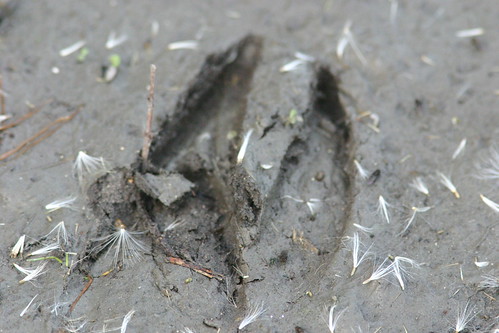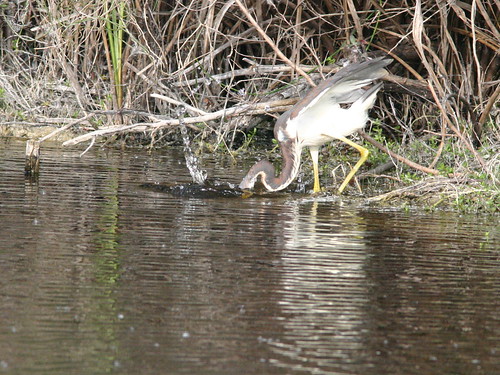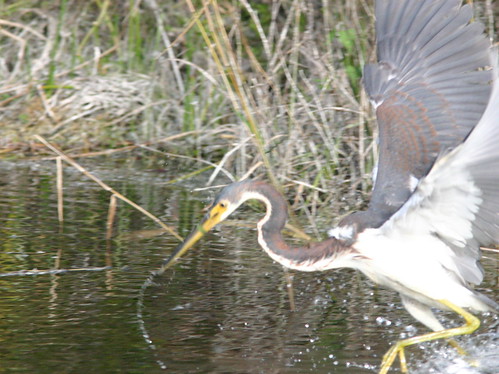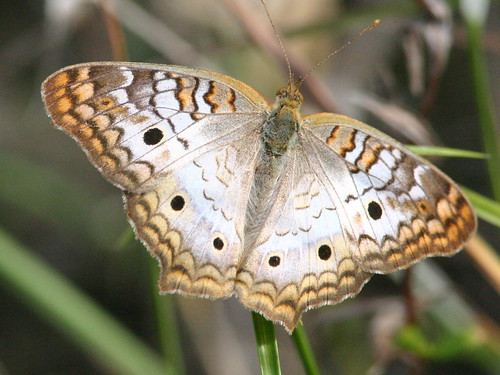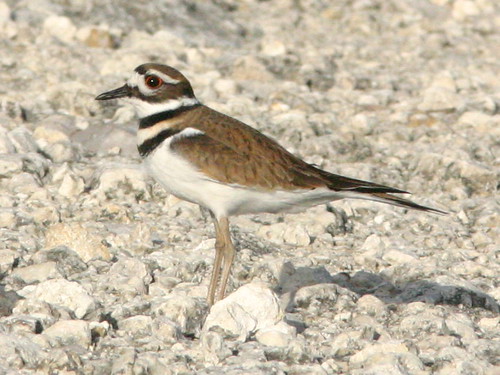Posted by: Ken @ 9:49 pm
Our neighborhood birding “patch” underwent quite a transformation overnight. It seems that one or more plant species have released innumerable wind-borne seeds. The air was full of them, and the ground was evenly covered with white fluff, which drifted like snow and coated the surface of the water in the borrow ditch that runs along the path.
Here is one of the plants that is spewing downy seeds (species unknown):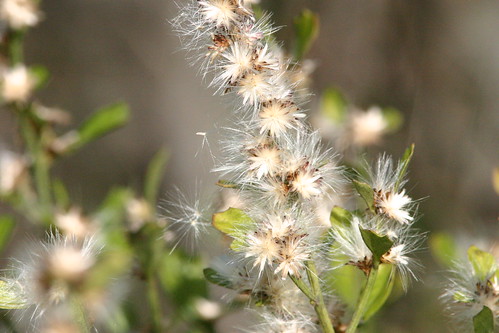
These fresh deer tracks are surrounded by the seeds:
I found this oddly shaped and colorful little Spiny Orb Weaver spider Gasteracantha cancriformis). It was fighting a losing battle with the seeds. Its web was loaded with them, and it worked feverishly to remove them. The spider would gather three or four seeds at a time, roll them into a loose ball, and then cut them free, to drift away with the wind. In the meantime it appeared to be repairing the holes thus created in its orb web.
However, new seeds were sticking in its web much faster than the spider could remove them. This is a view of the spider’s back– click on photo to see its underside:
With the approach of the winter dry season, water levels have decreased by 2-3 feet so far. Fish that formerly had access to the sawgrass wetlands now are concentrated in the ditches. This attracted several herons. Today I saw Great Blues, Little Blues, and Tricolored Herons, Black-crowned Night-Herons, Snowy and Great Egrets, as well as an Anhinga, all crowded into a quarter-mile stretch of a ditch that measured only about 10 feet across.
This Snowy Egret hunted with typical stealth:
A Tricolored Heron treated me to quite a show. When feeding, these herons can be very hyperactive. Though they are no match for the feeding antics of the Reddish Egret, they seem hilariously nervous and unpredictable as they dash here and there, back-tracking, splashing and making short flights as they sight prey.
Here the Tricolored Heron lunges for a fish (click on photo for additional views:
This heron was so intent on fishing the it allowed me to approach quite closely, almost too close for my long lens. It was working both sides of the ditch, and seemed unable to decide which side was best. It flew back and forth. Several times, on the wing, it tried to pluck unseen prey from the surface of the water. Once, it even settled on the water and swam bouyantly for a few seconds, looking very top-heavy.
This was about the best shot I could get of it acting like a kingfisher, dragging its feet in the water as it strikes the surface with its bill (click on photo for another view):
White Peacock butterflies were numerous:
Two pairs of Killdeer had returned to the shoulder of the gravel road where they have nested the past couple of years.
One pulled its “broken wing” act to distract me, suggesting that nesting activity may soon be underway, but I missed the photo-op (click for additional view):













